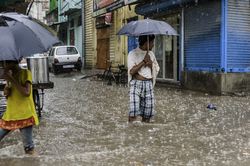Future of the monsoon
The East Asian monsoon – several months of intense daily storms – drives the ecology, economy and culture of the whole region. Climate change will probably affect the monsoon, although in ways as yet unknown. With EU funding, the EMIS (An intense summer monsoon in a cool world, climate and East Asian monsoon during interglacials with a special emphasis on the interglacials 500,000 years ago and before) project modelled the likely changes. The study focused on one particular monsoon that occurred during interglacial MIS-13, around half a million years ago. The event was the most powerful of the last million years, but is not well understood. By clarifying the MIS-13 occurrence and comparing it with others, the team helped to project future changes. The MIS-13 monsoon was powerful because of a strong land-ocean thermal contrast. The situation resulted from the combination of strong solar radiation and the Eurasian ice sheet. A warmer tropical Pacific pool increased summer rain in south China, but reduced precipitation in north China. The long duration of MIS-13 was also a factor in the monsoon's power. Researchers compared the MIS-13 climate system against other periods. Greenhouse gases dominated the effect on annual mean temperature, both globally and in southern highlands. Yet, solar energy was the dominant variable affecting monsoon precipitation, northern high latitude temperature and sea ice. A Mid-Brunhes Event (MBE) from 430 000 years ago, and associated deep-sea temperature changes, may hold the key to understanding the role of atmospheric carbon dioxide. The team found that the MBE may have been a set of separate responses to high solar energy conditions, rather than a distinct event. Boreal winters and the southern hemisphere also seem to have played a more important role in warming of post-MBE interglacials than pre-MBE periods. Comparison of nine interglacials showed that MIS-11 and MIS-19 closely agreed with MIS-1. However, the warmest interglacials, MIS-5 and MIS-9, must be compared against present and likely future conditions with great care. The EMIS project's work in unravelling the MIS-13 monsoon helped researchers forecast the changes likely under contemporary and future conditions. Such work supports mitigation and preparation efforts.



